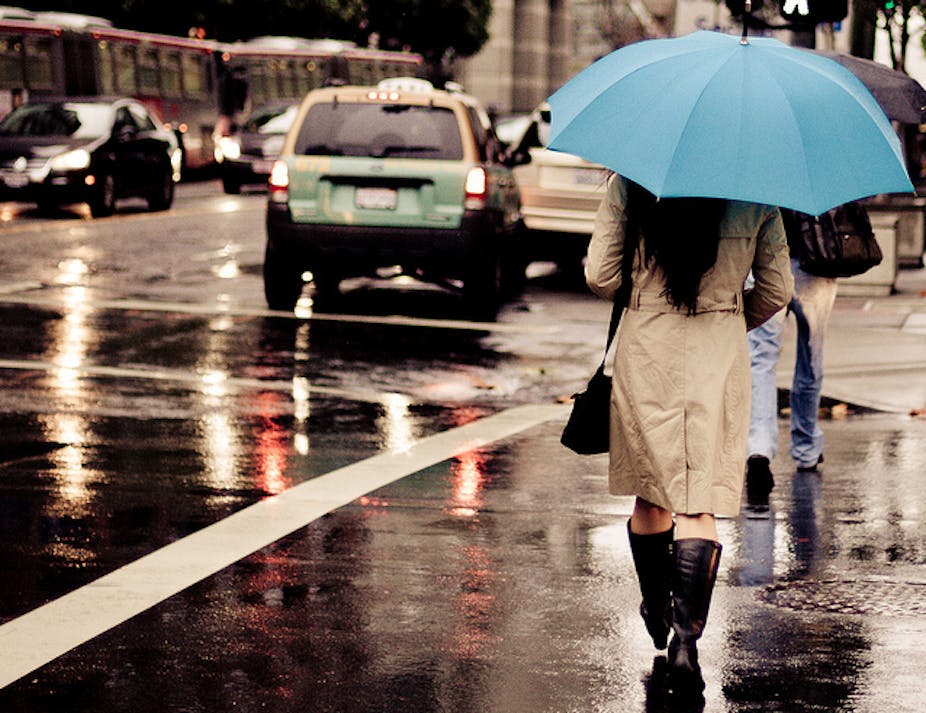As the days get shorter and we approach winter, many of us have a lowered mood, reduced energy levels and seem to need more sleep. Such seasonal changes in mood and energy are common and most of us adapt to them.
But for some, these changes are more profound and develop into a full-blown episode of wintertime depression that spontaneously remits in the spring. This form of depression is called Seasonal Affective Disorder (SAD).
Symptoms
This disorder was first identified in the 1980s as a seasonal depression. By 1987, a seasonal pattern was included as a “specifier” for recurrent major depression in the US psychiatric classification system, the Diagnostic Statistical Manual, and was widely recognised by therapists.
Patients suffering from SAD don’t have the typical features of depression such as insomnia and loss of appetite.
Instead, they complain of hypersomnia (sleepiness) and overeating with a craving for carbohydrates, along with a depressed mood and lowered self-esteem. Their energy levels and concentration are low, and this slowed thinking leads to poor functioning over the winter months.
Patients with SAD suffer increased anxiety which manifests as irritability and can have a negative impact on relationships.
SAD is more common in women than men and onset typically occurs in young adulthood.
Prevalence is highest in sub-polar regions (where winter nights are long) and lowest in equatorial regions, where an estimated 1% of the population suffer from the disorder.
SAD isn’t common in Australia – we don’t have the long winter nights found in North America, northern Europe etc. – but is does occur, and causes significant distress.
It is often undiagnosed as a specific form of depression, which means sufferers miss out on specific treatments.
Cause
SAD was initially considered to be a consequence of the short photoperiod (day length) of winter. Bright Light Therapy, also known as phototherapy, was thought effective because it artificially extended the photoperiod.
But as research has progressed it is more likely that the cause of SAD lies in a delay in circadian rhythms (our internal 24 hour cycle), especially in melatonin – the hormone our bodies secrete at night.
Melatonin secretion is suppressed by daylight and bright artificial light. Because melatonin is a marker of the circadian system, changing the timing of the melatonin rhythm can change the timing of other circadian rhythms.
In SAD, the secretion of melatonin is so delayed that melatonin continues to be secreted after sunrise and into the morning.
It’s not the amount of melatonin secreted that is the issue; it’s the timing of it. Bright artificial light applied early in the morning suppresses the secretion of melatonin and advances its rhythm.
This change has an effect of resynchronising circadian rhythms, therefore reducing depressive symptoms.
Treatment
Bright Light Therapy is the most natural and non-invasive treatment of SAD and was developed soon after the discovery of the disorder.
Exposure was initially very high, around 2,500 to 10,000 lux, administered from a distance of 50cm to one metre.
This intensity of light is considerably higher than normal artificial light – the luminosity of a standard artificial light is about 250 lux.
Light boxes using blue spectrum light have recently been developed. These smaller portable light boxes make treatment much easier.
The timing of Bright Light Therapy is crucial. It needs to be used early in the morning (general about 6am to 7am) for about one hour of treatment.
The side-effects of phototherapy, such as eyestrain, headaches and irritability, are mild and relatively short-lived. Overall, the treatment is tolerated well.
Spending time outside is a natural form of treatment for SAD, even if the sun’s not shining. Even if you only suffer from the winter blues, a brisk morning walk is a good way to increase endorphins and lift your mood.
So remember, if you’re feeling under the weather as we move into winter, even with Australia’s relatively mild climate, don’t discount the weather.

